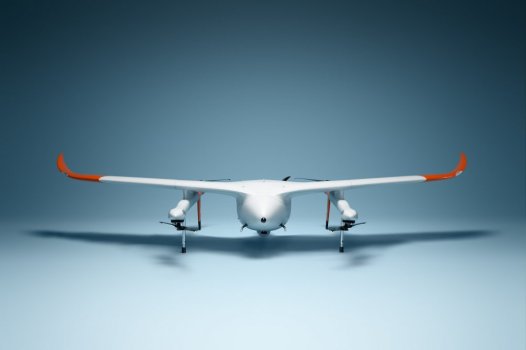K
Kathleen Martin
Guest
Thank you for sharing this story! However, please do so in a way that respects the copyright of this text. If you want to share or reproduce this full text, please ask permission from Innovation Origins ([email protected]) or become a partner of ours! You are of course free to quote this story with source citation. Would you like to share this article in another way? Then use this link to the article: https://innovationorigins.com/en/in-case-of-emergency-call-a-drone/
Just a few years ago, drone developers found themselves in a modern version of the Wild West, as no clear guidelines or regulations were in place. Meanwhile, drones have undergone a lot of development – including the materials – to such an extent that drones can save lives, and can do that in very many ways. By delivering medicines, by spotting a wildfire or a person in trouble at sea. Furthermore, they can now do it autonomously while keeping in touch with the closest emergency service stations.
Avy launched the concept of a Drone Response Network, including their autonomous Aera aircraft and its docking stations. The drones have vertical take-off and landing capabilities and can serve a variety of purposes, from transporting medicines to supporting emergency services during incidents.
Several companies joined Avy’s initiative – including the Port of Rotterdam, PostNL, and the Dutch blood bank Sanquin – to help the company develop its applications and make them fit for purpose.
Thank you for sharing this story! However, please do so in a way that respects the copyright of this text. If you want to share or reproduce this full text, please ask permission from Innovation Origins ([email protected]) or become a partner of ours! You are of course free to quote this story with source citation. Would you like to share this article in another way? Then use this link to the article: https://innovationorigins.com/en/in-case-of-emergency-call-a-drone/
“When we started the company, it was a bit of a Wild West country. There were no regulations, and the components available on the market weren’t good enough. Making this idea operational wasn’t easy, but we managed to do it,”founder, and Avy CEO Patrique Zaman told Innovation Origins.
After testing the system in different settings and with different applications, the company then announced that the first flights will take place next year.
A quickly-deployed smart eye The Avy Aera is reminiscent of the design of a bigger airplane. Its wings are 2.4 meters wide, while the whole device is a meter and a half in length. The drone can fly for up to 100 kilometers when unloaded, and has a 3 kilograms payload capacity. The system communicates via a mobile network – 4G or 3G LTE.
Aera takes pictures and shoots videos using an RGB and a thermal camera. These features enable many more types of applications, such as spotting people in distress at sea or detecting wildfires.
Continue reading: https://innovationorigins.com/en/in-case-of-emergency-call-a-drone/
Just a few years ago, drone developers found themselves in a modern version of the Wild West, as no clear guidelines or regulations were in place. Meanwhile, drones have undergone a lot of development – including the materials – to such an extent that drones can save lives, and can do that in very many ways. By delivering medicines, by spotting a wildfire or a person in trouble at sea. Furthermore, they can now do it autonomously while keeping in touch with the closest emergency service stations.
Avy launched the concept of a Drone Response Network, including their autonomous Aera aircraft and its docking stations. The drones have vertical take-off and landing capabilities and can serve a variety of purposes, from transporting medicines to supporting emergency services during incidents.
Several companies joined Avy’s initiative – including the Port of Rotterdam, PostNL, and the Dutch blood bank Sanquin – to help the company develop its applications and make them fit for purpose.
Thank you for sharing this story! However, please do so in a way that respects the copyright of this text. If you want to share or reproduce this full text, please ask permission from Innovation Origins ([email protected]) or become a partner of ours! You are of course free to quote this story with source citation. Would you like to share this article in another way? Then use this link to the article: https://innovationorigins.com/en/in-case-of-emergency-call-a-drone/
“When we started the company, it was a bit of a Wild West country. There were no regulations, and the components available on the market weren’t good enough. Making this idea operational wasn’t easy, but we managed to do it,”founder, and Avy CEO Patrique Zaman told Innovation Origins.
After testing the system in different settings and with different applications, the company then announced that the first flights will take place next year.
A quickly-deployed smart eye The Avy Aera is reminiscent of the design of a bigger airplane. Its wings are 2.4 meters wide, while the whole device is a meter and a half in length. The drone can fly for up to 100 kilometers when unloaded, and has a 3 kilograms payload capacity. The system communicates via a mobile network – 4G or 3G LTE.
Aera takes pictures and shoots videos using an RGB and a thermal camera. These features enable many more types of applications, such as spotting people in distress at sea or detecting wildfires.
Continue reading: https://innovationorigins.com/en/in-case-of-emergency-call-a-drone/

